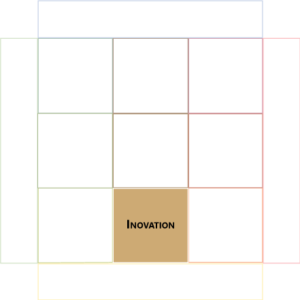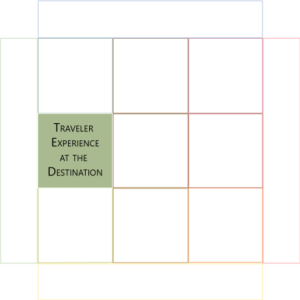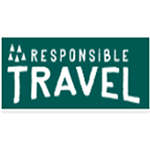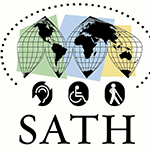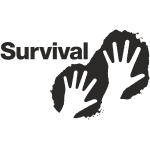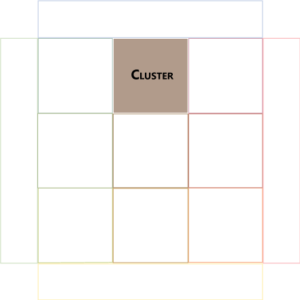
Cluster: 24 Questions for Leveraging Collaboration, Shared Resources, and Unique Opportunities for Mutual Growth and Success
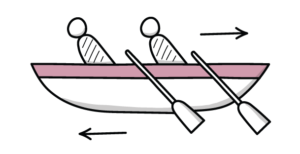
Cluster
Embracing Cooperation, Shared Goals, and Resource Optimization for Enhanced Growth and Competitiveness
Key to Success
In this section, we would like to make sure that Small and Medium-sized Tourism Enterprises (SMTEs) should be aware of the following:
- The economic benefits of clustering tourism businesses and activities include creating efficiencies and economies of scale, increasing competition and innovation, and economic growth.
- The role of destination branding and marketing in promoting tourism groups includes developing unique tourism offerings and assets to attract travelers and create a strong tourism identity.
- The importance of collaboration and cooperation among tourism businesses and stakeholders in developing and sustaining successful congregate includes developing partnerships and networks, sharing knowledge and best practices, and working together to promote common goals.
Accomplishments
In this step, we’ll:
- Identify our strengths as part of the group.
- Highlight the congregate
- Find better business opportunities.
Time-Saving Tools
We’ll complete all sections of this chapter more quickly if we have any of the following handy:
- The destination market plan and strategic plan.
- The sustainable development plan of the destination.
- Our business plan, our business objectives, and our strategic business plan.
- The destination laws are driving tourism.
- The destination inventory and other research.
- The trade travelers and other relevant stakeholders.
- Destination demand research and an analysis of the traveler demand profile.
- Research the potential customers who live in the destination.
- Research the potential customers who live 3 hours away from the destination.
- 2030 Agenda for Sustainable Development.
- Sustainable Development Goals (SDGs).
- Sustainable Development Goals strategies (SDG).
- Some sustainable development plan or guide aligned with SDGs.
- Research about the tourism industry.
- Another specific analysis applied to our case.
- All documents could find relevant information.
Homogeneous geographical spaces that have their own highly differentiated strategy, with sufficient infrastructure (traveler attractions, equipment, services, and traveler organization, and more) for the entire area, and that form trade relations between them. In other words, these are delimited areas of the territory whose structures and traveler activities enjoy homogeneity for the execution of a common and uniform traveler policy
M. Porter.
Cluster
Presentation
Clusters promote both competition and cooperation – Its advantage is location, so local groups of companies in the same area have more power. But on the other hand, also their existence is vital for regional development since we increase the capacity for innovation, performance levels, knowledge, and experience, as well as the critical mass of SMTEs in the region.
Small and Medium-sized Tourism Enterprises (SMTEs) can be clustered by similar technology, geographic concentration, or products linked by specialist supply chains, training, finance, and research facilities. In addition, destination groups should encourage cooperation among various providers across the value chain, including attractions and activities that bring travelers to the destination (such as food and drink providers, accommodation providers, retail, transport, and inbound tour agencies).
SMTEs should know that clustering can effectively drive growth and competitiveness in the tourism industry. Clustering involves collaborating with other businesses in the tourism sector to share resources, knowledge, and expertise. Here are some essential things to keep in mind when thinking about clusters:
- Identify compatible partners: Small and Medium-sized Tourism Enterprises should look for partners with similar values and target travelers. An agglomerate with a mix of businesses that offer complementary services or products can help create a seamless Traveler experience, benefit all SMTEs involved, and lead to repeat business.
- Have clear goals and expectations: Small and Medium-sized Tourism Enterprises should clearly define the goals and expectations for the group. This includes the cluster’s scope, each partner’s responsibilities, and the desired outcomes. A written agreement should be put in place to outline these details.
- Communication is key: Open and regular communication is essential for the cluster’s success. This includes setting up regular meetings, establishing a point of contact for each partner, and sharing updates on progress and any changes.
- Collaborate on projects: Clustering involves collaborating on projects with other businesses in the industry. This could include creating joint marketing campaigns, organizing events, or offering package deals that include services from multiple Small and Medium-sized Tourism Enterprises.
- Share resources and knowledge: The group can share resources, knowledge, and expertise to achieve economies of scale and reduce costs. This could include sharing marketing materials, staff, equipment, or expertise in a particular area of the tourism industry.
- Seek out opportunities for funding and support: Assemble can leverage funding and support from governments, tourism boards, and other organizations to help grow their business.
In conclusion, by following these guidelines, Small and Medium-sized Tourism Enterprises can effectively collaborate with other businesses in the tourism industry by congregating and driving growth and competitiveness.
GUIDING QUESTIONS
How can we promote responsible and sustainable practices within our cluster? Implementing eco-friendly initiatives and supporting local communities will contribute to small tourism enterprises' long-term success and reputation within our respective sets
YScala
A suggestion of guiding questions that are not intended to exhaust the topic:
- With whom can we join to coopetition in the cluster?
- What are our business’s main challenges, and how can clustering help us address them?
- What are the strengths and weaknesses of our business, and how can we leverage clustering to maximize our strengths and overcome our weaknesses?
- How can we benefit from economies of scale by sharing resources and knowledge with other businesses?
- What opportunities for cross-promotion or collaboration exist within the group, and how can we use them to reach a wider audience and increase sales?
- How can we learn from the experience and expertise of other businesses in the group and apply this knowledge to improve our operations and offerings?
- What opportunities exist for joint product development or diversification, and how can we use them to expand our offerings and increase revenue?
- What resources, logistics, and supplies can the group mobilize many more than its members can’t alone? What are the jointly negotiated inputs?
- How can we differentiate our offerings within a specific group? Identifying unique selling points and developing innovative products or services will help small tourism enterprises stand out.
- What are the data, information, and research shared with assembled members?
- What cluster-shared objectives are advocated against local governments, the DMO, and the traveler trade?
- How can we enhance our brand reputation and credibility by participating in a constellation with other high-quality businesses in the tourism industry?
- How do we improve public awareness of local populations about tourism’s potential benefits?
- What funding or support opportunities are available through the area, and how can we access them to help grow our business?
- How can we improve our marketing and promotional efforts through collaboration with other businesses?
- How can we build long-term relationships and partnerships with other businesses that will benefit our business over time?
- How can our business integrate or complement the existing tourism offer in the area?
- What is our business’s ability to integrate into the assemble and increase travelers’ interest in visiting the area?
- Who can we partner with to develop and deliver the experiences our travelers seek?
- To craft a relevant, engaging traveler experience, whom must we collaborate with?
- How does our business connect with the other businesses in the area?
- What are the congregate promotions, offers, and events?
- How does the group work to develop and promote the tourism product?
- How does our business interact and cooperate with other businesses (assembled members) to increase group power (politician, promotion, negotiation, and more) against competing traveler areas?
Offering more information
Besides the 24 guiding questions we’ve provided to help us evaluate and improve our cluster, we’ve compiled a list of valuable resources to further our knowledge and understanding of the cluster. Notably, these resources offer insights into best practices, sustainability, marketing, and more, catering to the needs of tourism professionals and stakeholders. Consequently, by exploring these links, you’ll be better equipped to make informed decisions and create a thriving, competitive, and sustainable destination for travelers from around the world.
International Economic Development Council – The International Economic Development Council (IEDC) is a non-profit organization that provides economic development resources and insights to communities around the world. Linking to their website could provide readers with additional resources on cluster development and economic development more broadly.
European Cluster Collaboration Platform – The European Cluster Collaboration Platform (ECCP) is an initiative of the European Commission that aims to promote cluster development and cross-border collaboration among businesses and organizations. Linking to their website could provide readers with insights and best practices on cluster development in Europe.
Harvard Business Review – As a leading business publication, Harvard Business Review offers a wealth of articles and insights on business strategy and innovation, including cluster development.
World Economic Forum – The World Economic Forum is a non-profit organization that brings together political and business leaders to address global challenges, including economic development. Linking to their website could provide readers with insights on global economic trends and cluster development.
Cluster Mapping Project – The Cluster Mapping Project is a research initiative of Harvard Business School that provides data and analysis on regional clusters in the United States. Linking to their website could provide readers with insights and data on regional clusters in the U.S.
As you conclude reading this orientation post, we’d like to invite you to explore the other insightful articles in our Business Tailor 4 Sustainable Tourism Develop Management Tool (BT4-STDM) blog. We invite you to engage with our community, share your perspectives, and contribute to this meaningful conversation by commenting below. Your experiences and ideas can help others in their sustainable tourism development management journey.
Let your like and recommend this post to improve your audience!
Share this post with friends, colleagues, or anyone else who might be interested.
Comments:
We invite you to engage with our community, share your perspectives, and contribute to this meaningful conversation by commenting below. Your experiences and ideas can help others in their sustainable tourism development management journey.




